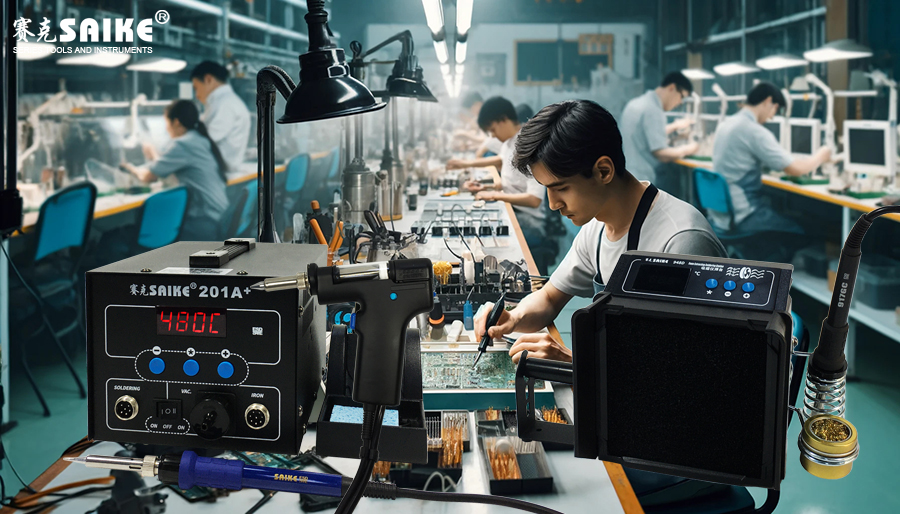
SK-YJ000HT-KP 100043
The soldering station is an indispensable tool in soldering operations, especially when performing soldering of precision electronic components. However, the soldering station may encounter problems of insufficient heating or unstable temperature during use, which not only affects the soldering quality but may also prolong working hours or cause component damage. This article will explore the common causes of insufficient heating or unstable temperature of the soldering station and their solutions, helping users effectively deal with this problem.
I. Causes of Insufficient Heating orUnstable Temperature of the Soldering Station
1.Power Supply Issues
– Broken or Poor Contact of the Power Cord: Aging or damage to the power cord, as well as loose connectors, can cause current instability or disconnection.
– Unstable or Mismatched Voltage: If the required voltage of the soldering station does not match the supply voltage, or if the grid voltage fluctuates significantly, it can also affect the heating of the soldering station.
2.Control System Malfunction
– Damaged Temperature Controller: The temperature controller or its internal components (such as thermistors) may be damaged, preventing accurate temperature detection or regulation.
– Internal Wiring Issues: The internal wiring of the soldering station may wear or loosen due to prolonged use.
3.Heating Element Problems
– Damaged Heating Element: Broken heating wires or performance degradation due to long-term use is a common cause of insufficient heating in soldering stations.
II. Solutions
1.Checking the Power Supply and Connections
– Inspect the Power Cord and Plug: Ensure that the power cord and plug are not damaged, broken, or loose. Replace the power cord or repair the connector if necessary.
– Test the Power Supply Voltage: Use a multimeter to test whether the voltage of the power socket is stable and matches the requirements of the soldering station.
2.Adjusting or Replacing the Control System
– Calibrate the Temperature Controller: If possible, calibrate the temperature controller to ensure accurate readings.
– Replace the Temperature Controller: If the temperature controller is damaged, replace it with a new one, choosing a controller that matches the specifications of the original equipment to ensure compatibility.
3.Replacing the Heating Element
– Inspect the Heating Element: Check the heating element for obvious signs of damage, such as breaks or burn marks. Use an ohmmeter to test the resistance of the heating element and confirm whether it is within the normal range.
– Replace the Heating Element: If the heating element is damaged, replace it with a new one of the same model or a compatible one.
4.Routine Maintenance
– Regular Cleaning: Regularly clean the soldering station, especially the soldering tip, to remove accumulated dust and solder residue.
– Periodic Inspection: Conduct comprehensive inspections regularly to ensure that all connections are tight and there is no corrosion or wear.
III. Conclusion
The problem of insufficient heating or unstable temperature of the soldering station can be solved by systematically checking and troubleshooting the causes. Every step, from inspecting the power system to replacing damaged components, should not be ignored. Keeping the soldering station well-maintained and regularly inspected is the key to preventing such problems. Proper maintenance and timely troubleshooting can not only extend the service life of the soldering station but also ensure soldering quality and improve production efficiency.


